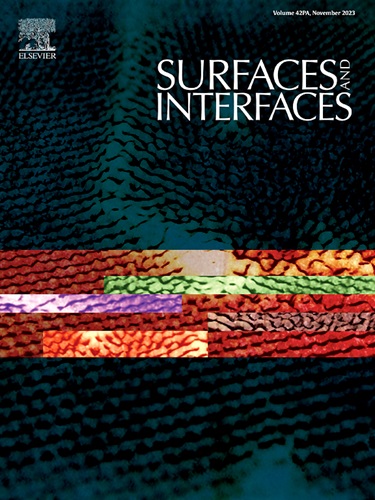Multiscale analysis of surface pit defect formation in chemical mechanical polishing of AlN single crystals
IF 5.7
2区 材料科学
Q2 CHEMISTRY, PHYSICAL
引用次数: 0
Abstract
Surface pit defects emerging during chemical mechanical polishing (CMP) of aluminum nitride (AlN) single crystals critically compromise device reliability. In this study, we develop a multiscale correlation model linking mechanical load, stress relaxation, dislocation evolution, and defect formation to elucidate the mechanisms and evolution pathways of these defects. In situ nanoindentation and polishing experiments reveal the governing role of mechanical loads. These loads control the elastoplastic deformation behavior of AlN crystals. Abaqus finite element simulations combined with wafer cleavage experiments characterize the three-dimensional stress distributions during abrasive indentation, demonstrating that residual stress relaxation predominantly drives defect morphology evolution. Additionally, atomic force microscopy scratch experiments uncover a dislocation slip-induced lattice distortion process at the microscale. Photoluminescence spectroscopy further confirms that ZrAl-VN composite defects—formed via abrasive embedding under chemo-mechanical synergy—induce emission peak broadening, highlighting the catalytic role of abrasive–substrate chemical bonding in defect evolution. This multiscale approach overcomes traditional single-physics limitations. It provides a comprehensive framework for damage control in ultra-precision machining of wide-bandgap semiconductors.
AlN单晶化学机械抛光表面凹坑缺陷形成的多尺度分析
氮化铝(AlN)单晶化学机械抛光(CMP)过程中出现的表面凹坑缺陷严重影响了器件的可靠性。在这项研究中,我们建立了一个连接机械载荷、应力松弛、位错演化和缺陷形成的多尺度相关模型,以阐明这些缺陷的机制和演化途径。原位纳米压痕和抛光实验揭示了机械载荷的控制作用。这些载荷控制着氮化铝晶体的弹塑性变形行为。Abaqus有限元模拟结合晶圆解理实验表征了磨粒压痕过程中的三维应力分布,表明残余应力松弛主导着缺陷形态的演变。此外,原子力显微镜划痕实验揭示了位错滑移引起的微尺度晶格畸变过程。光致发光光谱进一步证实了在化学-机械协同作用下通过磨料包埋形成的ZrAl-VN复合缺陷诱导发射峰展宽,突出了磨料-衬底化学键合在缺陷演化中的催化作用。这种多尺度方法克服了传统的单物理限制。它为宽禁带半导体超精密加工中的损伤控制提供了一个全面的框架。
本文章由计算机程序翻译,如有差异,请以英文原文为准。
求助全文
约1分钟内获得全文
求助全文
来源期刊

Surfaces and Interfaces
Chemistry-General Chemistry
CiteScore
8.50
自引率
6.50%
发文量
753
审稿时长
35 days
期刊介绍:
The aim of the journal is to provide a respectful outlet for ''sound science'' papers in all research areas on surfaces and interfaces. We define sound science papers as papers that describe new and well-executed research, but that do not necessarily provide brand new insights or are merely a description of research results.
Surfaces and Interfaces publishes research papers in all fields of surface science which may not always find the right home on first submission to our Elsevier sister journals (Applied Surface, Surface and Coatings Technology, Thin Solid Films)
 求助内容:
求助内容: 应助结果提醒方式:
应助结果提醒方式:


